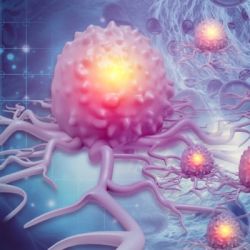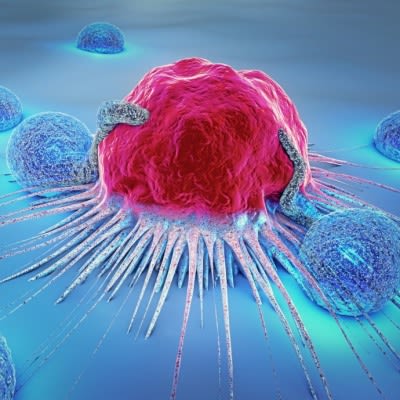If your patients are among the nearly 80% of women who develop fibroids by the age of 50, they could be experiencing heavy periods, frequent urination, bloating, pain during sex, lower back pain, and more.1 They may come to you for help, desperate to find relief from their symptoms.
A hysterectomy may be a treatment option you discuss, as it will offer complete relief by removing the fibroids and any chance that the fibroids will return. However, it’s important to make sure your patients think about all aspects of a hysterectomy—not just the physical but also the psychological, as both can have lasting impacts on your patients’ health and well-being.
Types of hysterectomy
Chances are most of your patients know that a hysterectomy is a surgery to remove the uterus. However, they may not know that there are different types of hysterectomy2:
- Total hysterectomy—the uterus and cervix are removed (ovaries are not removed)
- Supracervical hysterectomy—the upper part of the uterus is removed (the cervix is not removed)
- Radical hysterectomy—the uterus and cervix are removed along with structures around the uterus (you may recommend this if cancer is diagnosed or suspected):
- Salpingo-oophorectomy—both fallopian tubes and ovaries are removed
- Salpingectomy—just the fallopian tubes are removed
- Oophorectomy—just the ovaries are removed
You can guide your patients through which type could be best for them, depending on their situation, and then review the expected physical and psychological effects.
Physical effects of hysterectomy
A hysterectomy intended to relieve patients of uterine fibroids will do just that, and with the fibroids and uterus removed, patients will no longer experience fibroid-related symptoms. Removal of the uterus ends the menstrual cycle, and women can no longer become pregnant. These all may seem like obvious statements, but make sure your patients understand that these are permanent, potentially life-altering changes.
If your patients have not yet gone through menopause, make it clear that, if the ovaries are removed during the hysterectomy, this could trigger the symptoms of menopause—even if patients are at a much younger age than when menopause would typically begin. Point out that, although sexual function isn’t usually affected by a hysterectomy, symptoms such as low sex drive and vaginal dryness may occur.3
Psychological effects of hysterectomy
Lists of side effects of hysterectomy tend to focus on the physical changes with a limited mention of possible emotional consequences. It’s true that emotional reactions to a hysterectomy vary. Patients’ reactions can depend on their reasons for having the surgery and how well prepared they were for it.3
Some women find that a hysterectomy improves their health and well-being, as it eliminates symptoms that were negatively impacting their daily life,3 which may be the case for your patients with fibroids. In cases where cancer was a factor, the surgery may be viewed as a lifesaving procedure.3
However, other women may struggle emotionally. Although women know that pregnancy is not possible after a hysterectomy, they may still feel a sense of grief over losing their ability to bear children. Furthermore, as mentioned above, if a woman has not yet entered menopause and her ovaries are removed with the hysterectomy, she may experience immediate menopause signs and symptoms.2 This can have significant emotional consequences. When hormone levels drop during menopause, levels of serotonin also fall and can contribute to increased irritability, anxiety, and sadness.4
The increased risk of psychological issues after a hysterectomy has been documented in a study involving nearly 2,100 women.5 Researchers aimed to study the long-term risk of mental health conditions following a hysterectomy (without removal of the ovaries) and found an absolute risk increase of 6.6% for depression and 4.7% for anxiety for women over 30 years of age.5 For women who had a hysterectomy between the ages of 18 and 35, the absolute risk increase for depression was even higher at 12%.5
For some patients, a hysterectomy may be the right choice for treating uterine fibroids. However, given the permanence of a hysterectomy and some of the associated physical and psychological effects, it’s important to discuss other treatment options, if available, with patients.
Minimally invasive treatment options
Only a hysterectomy can guarantee absolute removal of fibroids and no risk of recurrence. But several minimally invasive options can relieve your patients of fibroid symptoms while preserving the uterus.
If your patients have future pregnancy plans, tissue removal using the MyoSure® device may be the right choice. This is a simple hysteroscopic procedure that removes fibroid tissue without having to remove or even cut the uterus. The MyoSure procedure is typically performed in an outpatient setting and only takes about 10 minutes.
For patients who are not planning future pregnancy, laparoscopic radiofrequency ablation using the Acessa® procedure may be best. By delivering controlled heat directly into a fibroid, the treated tissue softens and shrinks over time. Fibroid symptoms resolve without difficult and time-consuming uterine suturing.6 Plus, the Acessa procedure can help you easily locate and target nearly all types of fibroids, including intramural.7
A hysterectomy is no longer the only solution for women who are suffering from fibroids. Help your patients explore minimally invasive options that can bring them the relief they need without the physical and psychological side effects associated with removing the uterus.
Source: Hologic- GYN Surgical Solution
References:
1. U.S. Department of Health & Human Services Office on Women’s Health. Uterine fibroids. https://www.womenshealth.gov/a-z-topics/uterine-fibroids. Accessed January 31, 2023.
2. The American College of Obstetricians and Gynecologists. FAQs: hysterectomy. https://www.acog.org/womens-health/faqs/hysterectomy. Accessed January 31, 2023.
3. Cleveland Clinic. Hysterectomy. https://my.clevelandclinic.org/health/treatments/4852-hysterectomy. Accessed January 31, 2023.
4. Johns Hopkins Medicine. Can menopause cause depression? https://www.hopkinsmedicine.org/health/wellness-and-prevention/can-menopause-cause-depression. Accessed January 31, 2023.
5. Laughlin-Tommaso SK, Satish A, Khan Z, Smith CY, Rocca WA, Stewart EA. Long-term risk of de novo mental health conditions after hysterectomy with ovarian conservation: a cohort study. Menopause. 2020;27(1):33-42. doi:10.1097/GME.0000000000001415
6. Havryliuk Y, Setton R, Carlow JJ, Shaktman BD. Symptomatic fibroid management: systematic review of the literature. JSLS. 2017;21(3):e2017.00041. doi:10.4293/JSLS.2017.00041
7. Chudnoff SG, Berman JM, Levine DJ, Harris M, Guido Rs, Banks E. Outpatient procedure for the treatment and relief of symptomatic uterine myomas. Obstet Gynecol. 2013;121(5):1075-1082. doi:10.1097/AOG.0b013e31828b7962






















